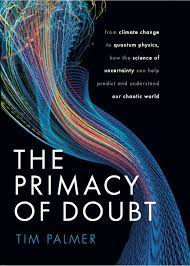Will the world effectively meet the climate-change challenge over coming decades? The answer to that question depends not just on today’s 6 billion adults but also on today’s 2 billion children and billions more of the as-yet-unborn. Unsurprising, then, that additional attention to the climate-change science taught in K-12 education is widely seen as a necessary (though not sufficient) condition for human success. It’s equally natural to be hopeful about this, in the sense that “Hope is not optimism, which expects things to turn out well, but something rooted in the conviction that there is good worth working for.” For one thing, parents care about few things more than the future prospects for their children.
The desired improvements are by no means assured. In part that’s because of the inherent complexity and vast scope of the climate-change problem. But the main obstacle? K-12 education itself is not in a state of rude health; it faces a broader set of concerns. These are worldwide, but today let’s zoom in on problems manifest here in America. Here’s one perspective – this from Public School Review citing The 15 Biggest Failures of the American Public Education System (the link provides thumbnail detail for each):
1. deficits in government funding for public schools
2. decline in school safety
3. challenges with technology in education
4. controversy over charter schools and voucher programs
5. problems with the common core curriculum
6. decreased teacher salaries
7. emphasis on standardized testing
8. arguments about teacher tenure
9. bullying in schools
10.growing problems with student poverty
11.schools are overcrowded
12.student mental health challenges
13.parents are not involved enough
14.too many schools are being closed
15.lack of teacher innovation and outdated teaching methods
Here’s a second list, showing quite a bit of complementary overlap but a different starting point and different articulation. It focuses on K-12 educators, versus education per se. It comes from Peter DeWitt, writing in Education Week: 11 Critical Issues Facing Educators in 2023 (again, the original article contains explanatory text for each):
1. guns
2. politics in education
3. social-emotional learning
4. the flu
5. de-implementation
6. substitute teachers
7. poverty
8. teacher shortage
9. teacher-prep programs
10.tutoring programs
11.a love for learning
Whew! Daunting lists – especially so, since many of the issues require addressing even larger societal ills: inequity, endemic racism, poverty, immigration, the polarization of society, and much more.
Back to the immediate LOTRW concern: the need for improved climate-change science education. Climate scientists can readily create shopping lists of topics needing more student time and attention. It would also be natural, and even defensible, for climate scientists to present their demands to pedagogues and stop there. After all, that’s what scientists know; they do well to stop short of over-reaching our area of expertise, or being prescriptive.
But that path does little more than present the educational enterprise with yet another unfunded mandate – just another set of reasons for beleaguered teachers, harried school administrators, and the larger K-12 educational enterprise to feel frustrated and even guilty about their straitened circumstances and inability to meet societal needs. If instead, the climate science community wants to see actual uptake of its recommendations by educators, it might need to go further. In particular, it might need to (1) bring additional resources to the table and (2) frame suggestions in a manner that would solve some of K-12 Education’s broader problems along the way.
Start with additional resources. Here the need is great. According to The Education Data Initiative,
In the United States, education spending falls short of benchmarks set by international organizations such as UNESCO, of which the U.S. is a member. The nation puts 11.6% of public funding toward education, well below the international standard 15.00%.
- Schools in the United States spend an average of $16,993 per pupil, which is the 7th-highest amount per pupil (after adjusting to local currency values) among the 37 other developed nations in the Organisation for Economic Co-operation and Development (OECD).
- In terms of a percentage of its gross domestic product (GDP), the United States ranks 12th among OECD members in spending on elementary education.
- The United States does not meet UNESCO’s benchmark of a 15.00% share of total public expenditure on education.
- In terms of early childhood education, the United States is one of six (6) countries that do not report any educational spending.
These national averages mask considerable variations across states and localities. Public spending per pupil can differ by factors of two or more.
By contrast, US R&D is relatively well funded. The US and China together dominate worldwide expenditures for R&D, spending about half the global total. R&D/capita is growing in both countries, though more rapidly in China. Given the importance of workforce in realizing the benefit from that expenditure, both in terms of the advance of science and technology, and their application for societal benefit, it would makes sense to explore tapping the major funding increments for science and technology embedded in the Inflation Reduction Act and the America Competes Act to further STEM education broadly and climate science education in particular.
Though the term “resources” includes funding, it’s broader. Equipping teachers to teach climate science material – especially increasing their mastery of and comfort with that material – is of comparable importance. (An infomercial; the AMS, through its Education Program, has taken this approach with teachers of K-12 science for decades.)
Framing also matters. Today’s teachers and principals are constrained by chronic funding shortages, but merely dissatisfied. By contrast they are emotionally drained by the politicization of education and the amped-up polarization of that politics, extending even to reading matter available in school libraries. Tumultuous school board- and PTA meetings, threatening e-mails and more are part of teachers’ lives these days. Though the furor is concentrated on wokeness, LGBTQ issues, etc., it extends to subjects such as climate change science.
It’s certainly justifiable to shrug shoulders and say that’s the world we live in and resignedly enter the fray. But to do that will be to fail.
Alternatively, it’s possible to widen the focus of the educational emphasis, moving from climate change per se to the science of the Earth, the atmosphere, and oceans more broadly. That approach promises to lower the temperature of any political debate. At the same time it is more intellectually honest in a way. That is because climate change, extreme weather, and even earthquakes and continental drift are all part of a single whole; and because all these topics deserve more attention in K-12 classrooms. They don’t simply matter in their own right to people trying to live a bit more safely, comfortably, and sustainably on a finite planet. They also introduce young people to fascinating, important, and visible applications of basic physics, chemistry, biology and mathematics – literally bringing these fundamentals to life. (A new study funded by the Bill and Melinda Gates Foundation shows that families are dissatisfied with math education; they want a more engaging set of math curricula with up-to-date lessons that are relevant and applicable to the real world.
Teachers also struggle to deal with the poverty and associated social/emotional problems they see students bringing into the classroom. There’s a dearth of hope. Another framing – a focus on the jobs and careers created by climate change – might help turn things around. I’m not talking about climate-change careers per se here. (That’s an important topic, and one currently receiving a lot of attention within the American Meteorological Society, popping up in studies and at sessions in conferences; e.g., the session on Enterprise-level workforce gaps.) I’m talking about the far larger numbers of jobs waiting in the energy industry, for example: Take wind energy alone. According to the DoE, the need is for up to 1000 US training and education programs:
… An available and qualified workforce is essential for any industry. For the workforce to grow, career options need to be communicated as early as the high school level as young people consider potential occupations and educational programs. The wind power industry provides well-paying jobs in rural America as well as in urban locations. Employment opportunities include construction, manufacturing, professional, and trade workers. Educational requirements for wind energy jobs range from high school diplomas to Ph.D.s and post-graduate professional degrees to vocational degrees and apprenticeships…
Similarly, the US solar energy workforce must double in the next decade. Annual employment in the EV production and maintenance sector is expected to grow by a factor of ten over the same period.
A K-12 education emphasis on these matters holds potential for increasing the engagement of seemingly disaffected parents.
A final reason for cheer. State and local governments play a major role in funding education. Local-place based approaches provide opportunity for experimentation and innovation in developing climate-science curricula, tying them to the rest of STEM education, and to K-12 education as a whole in different ways. Educators can meet the targets of local communities, move things along at a natural pace, and trade success stories.
The AMS, with its mission, tradition, global reach and local footprint (weather broadcasters, teachers, local forecast offices, local chapters, and WeatherBand) has much to offer here.
Who knows? Along the way to improving climates science education, we all might even (re)discover E pluribus unum.



